|
At the end of each month the SoPD writes a post which provides an overview of some of the major pieces of Parkinson’s-related research that were made available during September 2019. The post is divided into seven parts based on the type of research:
|
So, what happened during September 2019?
In world news:
11th September – Astronomers announced the detection of water in the atmosphere of an exoplanet called K2-18b – the first such discovery for an exoplanet in the habitable zone around a star (Click here to read more about this).
17th September – Josh Thompson from New Zealand was going to be made redundant, so he hired a clown to take to his redundancy meeting as his ‘support person’ (as is provided by NZ law). Joe the clown made sad faces when the conversation went negative and also made balloon animals throughout the meeting (only in NZ! – Click here to read more about this):
20th September – The Rugby World Cup started in Japan… and we all know who’s going to win (famous last words!)
28th September – SpaceX presented the Mark1 – the first prototype of their ‘Starship’ which is being developed for interplanetary travel.
And it was with sadness that the Parkinson’s research community heard about the passing of Prof Sir Chris Dobson. Most readers will not be aware of his incredible contributions to the field of Parkinson’s and neurodegeneration in general – he will be missed (Click here to read more about this).
In the world of Parkinson’s research, a great deal of new research and news was reported:
In September 2019, there were 831 research articles added to the Pubmed website with the tag word “Parkinson’s” attached (6215 for all of 2019 so far, and compared to 5978 at the same time in 2018). In addition, there was a wave to news reports regarding various other bits of Parkinson’s research activity (clinical trials, etc).
The top 5 pieces of Parkinson’s news
1. Excited about exercise
Researchers in the Netherlands published the results of a double-blind, randomised controlled clinical trial (the PARKI-in-Shape study) exploring effectiveness of at home aerobic exercise on Parkinson’s,… and they have a positive result! They report an OFF-state UPDRS motor score between-group difference of 4·2 points (p=0·0020) in favour of aerobic exercise (after 6 months of 30–45 min training 3x per week). Conclusion: At home aerobic exercise by folks with Parkinson‘s can help attenuate OFF-state motor signs ( to read more about this, click here to read the press release, and click here to read a SoPD post on this topic).
2. Something LRRKing in the immune system
Researchers reported that the protein LRRK2 can alter the course of bacterial & viral infections. Mice with the Parkinson’s–p.G2019S LRRK2 genetic variant showed reduced replication of a bacterial pathogen, but worse outcome to viral infection. Mice carrying the kinase-dead LRRK2 genetic variant, p.D1994S, exhibited improved survival to viral infection, suggesting that the kinase region is involved. Female LRRK2-deficient mice did not control infection as well as males. This is a fascinating study, with implications for not only Parkinson’s, but also leprosy & Crohn’s disease (Click here to read more about this and click here to read the press release).
3. From enlarged prostates to Parkinson’s
Chinese and US researchers published data suggesting that prostatic hyperplasia and hypertension drug, terazosin could be repurposed for Parkinson’s. Multiple PD models & human medical database evidence were presented in their report. They found that Terazosin activates phosphoglycerate kinase 1 (PGK1), one of the first enzymes in ATP production (the energy that cells run on). Treatment with terazosin rescued multiple neurotoxin & genetic models of Parkinson’s, and human dopamine neurons from LRRK2-G2019S patients that were grown in cell culture. MarketScan medical records database analysis found 2880 Parkinson’s patients with PD taking Terazosin (or similar) “had fewer PD-related diagnoses” than 15,409 individuals with PD + no Terazosin. PD-free individuals on Terazosin had reduced frequency of PD (0.62; P < 0.0001). A Phase II clinical trial for Terazosin in Parkinson’s is already being organised. It is a double blind, placebo controlled,12 weeks treatment in 20 people with PD (1:1 randomisation). Safety is the primary outcome, and it will be reporting in early 2020 ( to read the report, click here to read more about the clinical trial, click here to read the press release, click here for a good overview of this research, and click here to read an SoPD post on this topic).
4. When Miro can’t let go of mito
Stanford University researchers identifed Miro1 as a protein accumulating on depolarized (stressed) mitochondria. They found that the failure to effectively remove Miro1 was found in a large proportion of cells collected from both people with Parkinson’s and those at high risk of developing the condition – raising the possibility of a biomarker. But then the researchers conducted a drug screen and identified a small molecule that promotes Miro1 degradation. They found that this drug could rescue mulitple Parkinson’s models. Novel biomarker and treatment? (Click here to read more about this and click here to read the press release).
5. ASAP
An overview of the Aligning Science Across Parkinson’s (or ASAP) initiative was published. This is an exciting new project focused on basic research for Parkinson’s. It is being coordinated by a Nobel Prize winning research scientist and funded by the significant resources of the Sergey Brin (Google founder) family foundation. Expect to hear a lot more about this project going forward (Click here to read more about this).
Basic biology news
- Viral delivery of Nurr1 & Neurogenin 2 resulted in high-efficiency reprogramming of targeted astrocytes into neurons in the injured cortex. This approach is also being tested in model of Parkinson’s ( to read more about this).
- In a new manuscript on bioRxiv, researchers show that Lewy body formation, rather than simply fibril formation, is the major driver of neurodegeneration through disruption of cellular functions and inducing mitochondria damage and deficits and synaptic dysfunctions ( to read more about this).
- Removing Relish, the fly ortholog of mammalian NF-κB, confers increased resistance to an environmental toxin in a drosophila (fly) model of Parkinson’s. Curiously, activated Relish leads to increased sensitivity to bacterial infection after toxin exposure ( to read more about this).
- A manusript on bioRxiv reports that GDNF reduces accumulation of α-synuclein aggregates in cultured dopamine neurons & in a mouse model of Parkinson’s (AAV-hGDNF & α-syn pre-formed fibrils). The effect of GDNF on accumulation of α-syn is mediated by RET ( to read more about this).
- Researchers report a variant of heat shock protein 70 (HSP70) – termed Hsp-caaNBF – which displays enhanced suppression of α-synuclein protein aggregation & its associated toxicity in a C. elegans model of Parkinson’s ( to read more about this).
- New manuscript onbioRxiv suggests that TDP-43 mitochondrial translocation & chronic activation of Parkinson’s-associated PINK1-mediated pathways (by CHCHD10S59L) may generate dominant toxicity in ALS and frontotemporal dementia. “Genetic/pharmacologic inhibition of PINK1 mitigated CHCHD10S59L-induced toxicity. Reducing PINK1 or parkin-mediated pathways are beneficial in in vivo disease models of SOD1, FUS, & TARDBP mutations” Could small molecule inhibitors of PINK1 be useful in ALS/FTD? ( to read more about this).
- GV-971, a seaweed-derived oligosaccharide which has shown cognition improvements in a phase 3 trial in China, remodels gut microbiota & suppresses neuroinflammation to slow disease progression in Alzheimer’s mouse model. “Recently completed phase 3 trial (NCT02293915), GV-971 was demonstrated to meet the primary endpoint, with statistic significance (p < 0.001). No serious adverse events were observed, with similar incidence rate between GV-971 and placebo group. NDA filing for GV-971 in China”. Implications for Parkinson’s? ( to read more about this).
- Ras GTPase-activating protein-binding protein 1 (G3BP1) may play a protective role in the neuronal survival & development of neurodegenerative conditions like Parkinson’s. G3BP1 inhibits ubiquitinated protein aggregations (induced by p62 & USP10 – to read more about this).
- SINEUP – “a new class of antisense long non-coding RNA, that promote translation of partially overlapping sense protein-coding mRNAs” – targeting GDNF rescues the motor deficits & neurodegeneration in a mouse model of Parkinson’s ( to read more about this).
- Isosibiricin, a natural coumarin compound isolated from medicinal plant Murraya exotica, reported to inhibit microglial activation by targeting the dopamine D1/D2 receptor-dependent NLRP3/caspase-1 inflammasome pathway ( to read more about this).
- Researchers have developed a novel transgenic mouse to investigate intracellular endosomal intraluminal vesicles & extracellular exosomes in vivo & in vitro. Powerful new tool for Parkinson’s research? ( to read more about this).
- Researchers have a manuscript on bioRxiv reporting a mechanism by which small molecule activators of PINK1 may have therapeutic potential in Parkinson’s patients harbouring LRRK2 mutations ( to read more about this).
- Proteomic analysis of 33 genetic modulators of Parkinson’s-associated α-synuclein toxicity finds that inhibition of Pah1 activity rescues the toxic effects of α-Syn. Diacylglycerol & lipid droplets may play a role in cytotoxicity induced by α-Synuclein ( to read more about this).
- Fragmented mitochondria released from microglia trigger A1 astrocytic response & propagate inflammatory neurodegeneration. Potential new intervention for neurodegeneration? (one that inhibits mitochondrial fragmentation in microglia – to read more about this).
- Another study suggests that mitochondrial fragmentation in cells with optic neuropathy, Parkinson’s, or ALS pathology results from impaired balance between fission & fusion arising from longitudinal interactions of mitochondria (Click here to read more about this).
- mTORC1 kinase activity in Gaucher disease neurons is hyperactive. Inhibition of glucosylceramide synthase enzyme restores mTORC1 activity. mTOR inhibition upregulated lysosomal biogenesis & enhanced autophagic clearance. Implications for GBA-Parkinson’s? ( to read more about this).
-
CD4+ T cells deficient in Parkinson’s-associated alpha synuclein have increased pro‐inflammatory response. Elevated levels of Nurr1 are associated with this pro‐inflammatory profile. Silencing of Nurr1 rescues this profile (Click here to read more about this).
- An analysis of rare stop-gain PABPC4L variant in familial atypical Parkinsonism finds mutant protein is mislocalised in cell (everywhere as opposed to normal nucleus location) & unable to associate with stress granules ( to read more about this).
- A novel approach (called BridGE – Bridging Gene sets with Epistasis) provides a general framework for mapping complex genetic networks underlying human diseases from genome-wide genotype data. The researchers use Parkinson’s data as a demonstration ( to read more about this).
-
Dopamine neuron induction & the neuroprotective effects of thyroid hormone (triiodothyronine & thyroxine) derivatives. Potential Parkinson’s therapies without excessive thyroid stimulation? (Click here to read more about this).
- New manuscript on bioRxiv reports that the absence of Parkinson’s-associated DJ-1 in mice leads to an increase in gut inflammatory bacteria composition, deregulated metabolites & dysregulated innate immunity ( to read more about this).
- Researchers have a manuscript on bioRxiv reporting that exercise conditioned plasma dampens inflammation (via clusterin) & boosts memory in mice. 6 months exercise in cognitively impaired humans raises plasma clusterin levels ( to read more about this).
- Researchers demonstrated that dual modulation of neuron‐specific microRNAs & the REST complex promotes functional maturation of human adult induced neurons (Click here to read more about this).
- Researchers report that altering sphingolipids can mitigate the spread of Parkinson’s-associated alpha synuclein, even under hypoxic conditions. Inhibiting nSMase2 (siRNA or cambinol) decreases the transfer of oligomeric aggregates of α-syn between cells (Click here to read more about this).
- Interesting investigation of the protein “aggregate contactome” using siRNA. Curious result: Aspirin opposes protein aggregation by reducing contactome interactions >5-fold. Implications for Parkinson’s? ( to read more about this).
- Researchers report that Parkinson’s-associated gene PINK1 activates Akt (via PINK1 kinase-dependent regulation of the phospholipid PI(3,4,5)P3). In the absence of PINK1, there is significant Golgi fragmentation (Click here to read more about this).
- Further evidence of Niacin‘s ability to reduce neuro-inflammation in conditions like Parkinson’s via its receptor GPR109A ( to read more about this).
- Researchers reveal a direct molecular link between Parkinson’s-associated PARKIN & protein degradation in the control of the NF-κB pathway (Click here to read more about this).
- Researchers have a bioRxiv manuscript in which RNA sequencing of prefrontal cortex from 49 individuals demonstrates that common gene expression signatures are significantly confounded by differences in cell-type composition (Click here to read more about this).
Disease mechanism
- HDAC inhibition (via Valproic Acid) induces neuroprotection & improvement of Parkinson’s-like behaviors in LRRK2 R1441G transgenic mice ( to read more about this).
- Dexrazoxane – clinically used to reduce cardiotoxicity in chemotherapy – has been found to suppresses systemic inflammation in both peripheral tissues & brain, reducing neurodegeneration & glial activation in model of Parkinson’s ( to read more about this).
- Researchers report that oleanolic acid mitigates the neurotoxic effects of a model of Parkinson’s by attenuating intracellular ROS & striatal microglial activation ( to read more about this).
- Receptor interacting protein kinase-1 & -3/mixed lineage kinase domain-like protein (RIP1/RIP3/MLKL) mediates dopaminergic neuron necroptosis in a mouse model of Parkinson’s ( to read more about this).
- Resolvins are metabolic byproducts of omega-3 fatty acids. New study shows endogenous Resolvin D1 is decreased in people with early-Parkinson’s, & chronic Resolvin D1 administration in a-syn rats prevents inflammation, CNS dysfunction, & motor deficits ( to read more about this and click here to read a SoPD post on this research).
-
Treatment with the β2‐adrenoceptor agonists, clenbuterol & formoterol, rescue motor function & dopamine cell loss in a rodent model of Parkinson’s (intra‐nigral LPS). “β2‐adrenoceptor agonists may prove useful as immunomodulatory agents” (Click here to read more about this).
- Infection with a mosquito-borne alphavirus (Western equine encephalitis virus) induces Parkinson’s-like selective loss of dopaminergic neurons, neuroinflammation & widespread proteinase K-resistant protein aggregates in mice ( to read more about this and click here to read a SoPD post on this topic).
- Researchers have reported something interesting: silver staining properties of assembled α-synuclein in nerve cells following injection of Parkinson’s or MSA brain homogenates depend on both transgene expression & its cellular environment ( to read more about this).
- Researchers report that loss of SATB1 induces p21-dependent cellular senescence in post-mitotic dopaminergic neurons. Implications for Parkinson’s? ( to read more about this, and click here to read a previous SoPD post on this report).
- There is evidence of an association between Parkinson’s & osteoporosis. New study reports neurotoxin-induced dopamine degeneration in mice resulted in bone loss due to accelerated osteoclastogenesis & suppressed bone formation. Interesting gender differences ( to read more about this).
- Nice study refining our understanding of how grafted neurons integrate into host circuitry, important insight for efforts taking stem-cell-based replacement therapies to the clinic for Parkinson’s – seriously, beautiful videos ( to read more about this).
- Parkinsons-associated iPLA2-VIA/PLA2G6 regulates neuronal functions & alpha synuclein stability through membrane remodeling. Membrane remodeling by iPLA2-VIA appears to be required for the survival of dopamine neurons & alpha synuclein stability (Click here to read more about this).
- New report suggests epilepsy treatment Levetiracetam corrects the Parkinson’s-associated LRRK2 G2019S mutant phenotype in cell culture (Click here to read more about this).
Clinical research
- Subthalamic nucleus deep brain stimulation selectively modulates emotion recognition of facial stimuli in Parkinson’s. Apparently it worsens implicit & explicit processing for disgust stimulus material but improved explicit processing of fear stimuli ( to read more about this).
-
Serum galectin-3 levels were found to be significantly higher in idiopathic Parkinson’s than the control group (p < 0.001). Could galectin-3 levels be an accessible biomarker for PD? (Click here to read more about this).
- New manuscript on bioRxiv reports analysis of blood cells from healthy controls, idiopathic Parkinson’s (iPD), & LRRK2-G2019S carriers with or without PD and showed significant reductions in pS935 LRRK2 levels in G2019S carriers with PD compared to those without PD or iPD ( to read more about this).
- A retrospective pilot study in six Italian deep brain stimulation for Parkinson’s centers finds a lower rate of mild cognitive impairment, urinary incontinence, nocturia & falls, without evidence of an increased risk of dementia & mortality ( to read more about this).
- Researchers report unique α-synuclein pathology within the amygdala in Lewy body dementia, which could have implications for disease initiation & progression ( to read more about this).
- The perceived barriers & facilitators to communicating about OFF periods in Parkinson’s are different between health care providers & receivers of health care. An interesting study identifies barriers & discusses strategies to optimise communication ( to read more about this).
- Researchers report that Parkinson’s is associated with increased functional connectivity of subdivisions of the thalamus which may be indicative alterations to basal ganglia-thalamocortical circuitry ( to read more about this).
-
A case–control association study for Parkinson’s suggests that LRRK2 N551K & R1398H variants are protective in Malays & Chinese cohorts in Malaysia (Click here to read more about this).
-
A systems biology approach towards the identification of candidate therapeutic genes & potential biomarkers for Parkinson’s, highlights several putative biomarkers in blood (Click here to read more about this).
-
An analysis of the frequency of the LRRK2-G2019S variant in a cohort of 647 unrelated South Africans with Parkinson’s finds none of the 91 individuals of African ancestry had G2019S (Click here to read more about this).
- Could antibiotic-driven loss of microbial diversity be partly responsible for increased risk for chronic disease, like Parkinson’s? ( to read more about this).
- Analysis of the Hellenic Biobank of Parkinson’s suggests well-known negative association of smoking with PD occurs across all PD subtypes in the Greek population, but not early-onset PD. Early-onset PD also has strong inverse association with coffee ( to read more about this).
- A systematic review of Parkinson’s gut microbiome studies highlights an increase of Verrucomicrobiaceae & Akkermansia, & a decrease of Prevotellaceae across studies. An attempt to increase the comparability & utility of all this data ( to read more about this).
- Interesting case study & literature review of early-onset Parkinson’s caused by PLA2G6 compound heterozygous mutation ( to read more about this).
-
New results suggest that in Parkinson’s “dopamine-resistant tremor may be explained by increased cerebellar & reduced somatosensory influences onto the cerebellar thalamus, making this region less susceptible to the inhibitory effects of dopamine” (Click here to read more about this).
-
New data suggest the potential use of urinary bis(monoacylglycerol)phosphate isoforms as biomarkers for clinical trials of LRRK2‐targeted therapies for Parkinson’s (Click here to read more about this).
-
Yet more data from Taiwan reporting that chronic hepatitis C is associated with an increased risk of Parkinson’s, & antiviral therapy reduces that risk (Click here to read more about this and click here to read a SoPD post on this topic).
- Using a fluorescent antibody to detect gingipain R1, researchers explore whether Parkinson’s is a systemic inflammatory disease accompanied by bacterial inflammagens ( to read more about this).
- Researchers have abioRxiv maunscript comparing the effectiveness & side-effect profile of adaptive Deep Brain Stimulation vs conventional DBS & no stimulation in 13 individuals with Parkinson’s ( to read more about this).
- A bioRxiv manuscript proposes neurofilament light chain (NfL) as the first blood-based Parkinson’s progression biomarker. NfL levels in serum samples are increased in PD, increase significantly over time in PD, & correlate with clinical severity ( to read more about this).
- Analysis of plasma-derived extracellular vesicles from 19 people with dementia with Lewy bodies (DLB) & 20 heathy controls suggests that gelsolin may be a possible biomarker ( to read more about this).
- Researchers report that plasma IL-17A correlates with non-motor symptoms scores, while IL-6 positively correlates with motors scores in 66 people with Parkinson’s. No correlations between cytokines & disease duration ( to read more about this).
- Researchers examined causal associations between risky behavior phenotypes & Parkinson’s using a mendelian randomization approach. They found support for a causal relationship between general risk tolerance & PD (Click here to read more about this).
- New results from an observational, exploratory study, in which people with Parkinson’s wore a smartwatch and used the Michael J Fox foundation Fox Wearable Companion mobile phone app to stream movement data and report symptom severity and medication intake for 6 months ( to read more about this).
-
New 7 yr prospective follow-up study finds that orthostatic hypotension (lowing of blood pressure when standing) is a very frequent but undertreated complication in early Parkinson’s, with associations to both disease-specific symptoms & drug treatment (Click here to read more about this).
-
An analysis of the frequency of postural abnormalities in 811 people with Parkinson’s finds that they are frequent & disabling, especially in the advanced disease stages (Click here to read more about this).
- New research provides further support for impairments in circle drawing & associated electromyography activity in people with Parkinson’s (compared to controls – to read more about this).
- The results of a pilot, randomised, controlled trial with crossover suggest that a progressive modular rebalancing system & visual cueing could be useful for gait rehabilitation in Parkinson’s ( to read more about this).
- A systematic review and meta-analysis investigating the impact of appendectomy on Parkinson’s disease suggest that appendectomy does not significantly affect PD risk, age at onset or severity ( to read more about this).
- Researchers report that circulating Mesencephalic astrocyte-derived neurotrophic factor (MANF) but not cerebral dopamine neurotrophic factor (CDNF) level is increased in the blood of Parkinson’s patients (is MANF a biomarker? – click here to read more about this).
- EUROPAR & the Move Disorder Non-Motor PD Study Group have a new report suggesting that non-motor outcomes depend on location of the electrodes in bilateral deep brain stimulation of the subthalamic nucleus for Parkinson’s (Click here to read more about this).
- A new study finds that levels of oligomeric alpha synuclein in reflex tears can be used to distinguish Parkinson’s patients from healthy controls (84 age & sex-matched participants in each group – click here to read more about this).
- Researcher demonstrate in a brain imaging (11C-BU99008 PET) study that imidazoline 2 binding sites reflecting astroglia pathology in Parkinson’s (Click here to read more about this).
- Researchers investigated the cerebral mechanisms underlying dopamine-resistant versus dopamine-responsive tremor in 34 people with Parkinson’s. Dopamine-resistant tremor=increased tremor amplitude-related activity in the cerebellum (Click here to read more about this).
- Researchers report a study involving continuous monitoring (using 3 wearable devices) & questionnaires (at 7 semi-random moments per day on their mobile phone) of 20 people with Parkinson’s for 2 weeks (Click here to read more about this).
New clinical trials
- A Phase II clinical trial has started for testing an experimental cABL inhibitor K-706 in people with Early Parkinson’s by Sun Pharma Advanced Research Company (SPARC – Click here to read more about this).
- New clinical trial registered by United Neuroscience Ltd to begin testing UB-312 in healthy individuals and folks with Parkinson’s. UB-312 is a synthetic peptide-based ‘endobody’ vaccine targeting the aggregated form of alpha-synuclein protein (Click here to read more about this).
- Interesting new study has been registered seeking to investigate molecular and functional brain imaging of Parkinson’s pathology in people with SNCA, PARKIN & PINK1 variants (with & without PD), idiopathic PD, & healthy controls (Click here to read more about this).
-
The “BIG for Life” clinical trial (a Rock Steady Boxing project) has been registered. Investigating the impact of a weekly exercise group on motor function & quality of life in 20 people with Parkinson’s over an 8 week period (Click here to read more about this).
-
Interesting new Xenon clinical trial for Parkinson’s has been registered. Nobilis Therapeutics is conducting a 24 week evaluation of their NBTX-001 (30% medical grade xenon/70% Oxygen) product in 60 people with PD (Click here to read more about this).
Clinical trial news
- Denali Therapeutics has announced initiation of dosing in their Phase 1b clinical study of the LRRK2 inhibitor DNL151 in people with Parkinson’s. The study is a 28-day, multicenter, randomised, placebo controlled, double-blind Phase 1b clinical trial in people with mild to moderate PD, with & without genetic LRRK2 mutations. Results expected in early 2020 ( to read more about this).
-
Cerevel Therapeutics reports that their D1 receptor agonist Tavapadon (formerly PF-06649751) has met its primary endpoint in their Phase 2 trial in Parkinson’s ( to read more about this).
-
A strategy only for women? Secondary analysis of the Phase II SURE-PD results “provides Class II evidence that inosine produced greater urate elevation in women than men & may slow Parkinson’s progression in women“. What about the SURE-PD III results? (Click here to read more about this).
- Laser cuing is being tested for freezing of gait in Parkinson’s. New study finds it significantly improves gait performance in spatiotemporal parameters as well as kinematics & kinetics performance in ankle & hip joints ( to read more about this).
- Interesting results from Phase IIa trial in Alzheimer’s which can be relevant to Parkinson’s too. One month results reveal reductions in multiple inflammation markers (and NfL). Cassava Sciences reports that their lead compound, PTI-125, significantly decreased key biomarkers of neuroinflammation and neurodegeneration (Click here to read more about this).
- New clinical trial results suggest that a combination of Nintendo Wii with conventional exercises is more effective for people with Parkinson’s than conventional exercises alone ( to read more about this).
- Prevail Therapeutics provides an update on their gene therapy approach (PR001) for GBA-associated Parkinson’s. The company is in the process of activating sites for its Phase 1/2 clinical trial in PD-GBA & is on track to initiate patient dosing this year. “This randomized, double-blind, sham procedure-controlled, ascending dose Phase 1/2 clinical trial will enroll up to 16 #Parkinsons-GBA patients. 2 escalating dose cohorts are planned. In each cohort, 6 patients will receive PR001, administered as a single injection, and two patients will receive a sham procedure as control. The trial will investigate the safety & tolerability of PR001 and will also measure key biomarkers and exploratory efficacy endpoints” ( to read more about this).
- The Voyager Therapeutics double-blinded RESTORE-1 study – a Phase 2 clinical trial of the gene therapy approach VY-AADC02 – for advanced Parkinson’s has started enrolling in the US (Click here to read more about this).
Other news
- A useful summary of the Cure Parkinson’s Trust and Van Andel Institute‘s Linked Clinical Trials meeting from last month is now available. Amazing progress being made – 16 drugs in 17 clinical trials for slowing the progression of Parkinson’s ( to read more about this).
- Ken Griffin’s “Alpha-synuclein Imaging Competition” is now on! The Michael J Fox foundation has announced a $7.5 million gift from the Citadel founder and CEO that will be used to spur Parkinson’s research (Click here to read more about this and click here for the MJFF press release).
- AC Immune has been awarded a Michael J Fox Foundation grant to accelerate the development of their Parkinson’s diagnostic imaging agent (Click here to read more about this).
- New gloves being developed to help with tremors in essential tremor and Parkinson’s ( to read more about this).
-
The Critical Pathways for Parkinson’s consortium and industry partners have provides an update on the development of a disease progression model for leucine‐rich repeat kinase 2 (LRRK2) in Parkinson’s to inform clinical trial designs ( to read more about this).
- “You have to know why you’re doing this” A really interesting report from Parkinson’s advocate Sara Riggare & colleagues exploring user experiences of the benefits & burdens of self-tracking in Parkinson’s ( to read more about this).
- Newronika, an Italian startup developing closed-loop, adaptive deep brain stimulation devices for treating people with Parkinson’s, has raised an €8.4 million in VC funding (Click here to read more about this).
- The Silverstein Foundation announce the launch of Chamishi Therapeutics. “Chamishi will initially focus on developing antisense oligonucleotide therapies for Glucosylceramidase Beta Acid (GBA)-Parkinson’s” (Click here to read more about this).
Review articles/videos
- Interesting review of the relevance of insulin action in the dopamine neuron system. A useful discussion of molecular mechanisms & efforts to translate antidiabetic drugs (such as metformin, exenatide, DPP IV inhibitors) for Parkinson’s ( to read more about this).
- Interesting discussion about recent research suggesting a role for neuromelanin in Parkinson’s pathogenesis ( to read more about this, click here for the original report, and click here for a SoPD post on this research).
-
Is Parkinson’s an autoimmune condition? Interesting piece (Click here to read more about this).
- Interesting review of Parkinson’s-associated DJ-1 Involvement in pathogenesis, relevance as a PD biomarker, & studies exploring it as a possible therapeutic target for PD (& other neurodegenerative conditions) are discussed ( to read more about this).
- What we learnt from the GDNF trial (Click here to read more about this).
- A review of clinical trials for new treatments for Dyskinesia in Parkinson’s ( to read more about this).
-
Deep brain stimulation & genetic variability in Parkinson’s: a review of the literature (Click here to read more about this).
- New review article highlights studies discussing promising associations between lifestyle and Parkinson’s. It explores how lifestyle behaviours may affect the risk of acquiring PD & the management of symptoms ( to read more about this).
- Interesting review of mechanisms & disease implications of sirtuin-mediated autophagic regulation. Implications for multiple conditions here, including Parkinson’s ( to read more about this).
- Nice review on the endotoxicity associated with dopamine dyshomeostasis – how impaired dopamine metabolism could be playing a role in Parkinson’s pathogenesis ( to read more about this).
- Interesting piece on Voyager Therapeutics & their gene therapy clinical trial programme in Parkinson’s (not an endorsement, just an interesting read – to read more about this).
- Review of the clinical/neuropathological features/diagnostic challenges of Lewy body dementia. “Braak’s Parkinson’s staging suggests that LBD is a prion‐like disease… LBD exhibits considerable heterogeneity in both clinical and pathological settings” ( to read more about this).
- For those unfamiliar with LRRK2 & it’s association with Parkinson’s – a nice short review (Click here to read more about this)
- A nice review (“the current state of knowledge”) of the intestinal barrier in Parkinson’s (Click here to read more about this).
- “The present proposal provides a fresh hypothesis-generating framework for future studies into the etiopathogenesis of Parkinson’s & seems capable of explaining a number of discrepant findings in the neuropathological literature” ( to read more about this).
- What are the differences in Parkinson’s between men and women? ( to read more about this).
- Interesting discussion on Parkinson’s-associated alpha synuclein as a driving force in neurodegenerative comorbidities ( to read more about this).
- Could reducing endotoxin levels or endotoxin-induced neuroinflammation help with Parkinson’s? Interesting hypothesis proposed ( to read more about this).
- Parkinson Wellness Project (PWP) – what a great idea! ( to read the press release and click here to see the website).
- Interesting short review of non-pharmacological modulation of chronic inflammation in Parkinson’s. Particular emphasis of the roles of diet & exercise interventions ( to read more about this).
- The mechanism & potential feasibility of mitochondrial pyruvate carrier inhibition as a neuroprotective strategy for conditions like Parkinson’s – nice short review on the topic ( to read more about this).
- A great review of the current alpha synuclein targetting therapies being developed for Parkinson’s (Click here to read more about this).
- And another review of the current trials for gene therapy for Parkinson’s (Click here to read more about this).
- Everything you need to know about spinal cord stimulation for gait disorders: from bench to bedside, with interesting discussion on potential mechanisms of action, neural substrates, & clinical outcomes. Novel treatment option for Parkinson’s ( to read more about it).
* * * * * * * * * * * *
And there it is, just some of the highlights from September 2019 – another very busy month of Parkinson’s research. Hopefully there will be bits and pieces of interest for everyone in the list. Much of the material used here was collected from the Science of Parkinson’s Twitter feed (and there is a lot more posted there each day).
Any thoughts/feedback would be greatly appreciated (either in the comments below, or contact me directly).
And now: on to October!
EDITOR’S NOTE: The information provided by the SoPD website is for information and educational purposes only. Under no circumstances should it ever be considered medical or actionable advice. It is provided by research scientists, not medical practitioners. Any actions taken – based on what has been read on the website – are the sole responsibility of the reader. Any actions being contemplated by readers should firstly be discussed with a qualified healthcare professional who is aware of your medical history. While some of the information discussed in this post may cause concern, please speak with your medical physician before attempting any change in an existing treatment regime.
In addition, many of the companies mentioned in this post are publicly traded companies. That said, the material presented on this page should under no circumstances be considered financial advice. Any actions taken by the reader based on reading this material is the sole responsibility of the reader. None of the companies have requested that this material be produced, nor has the author had any contact with any of the companies or associated parties. This post has been produced for educational purposes only.










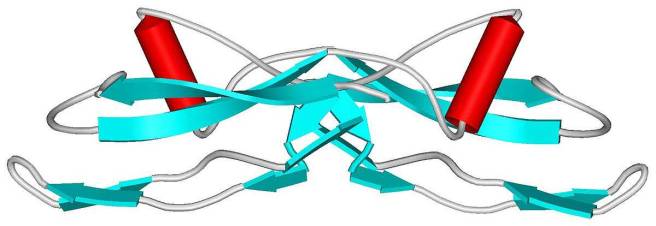
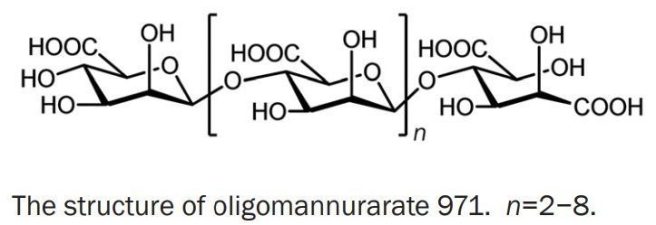


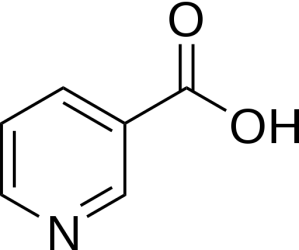
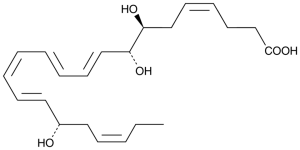
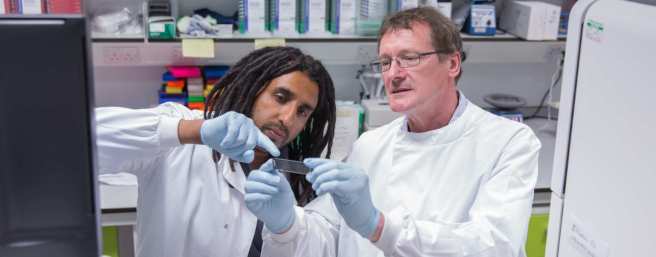
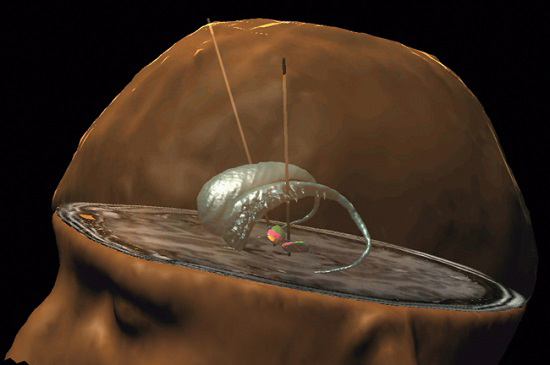











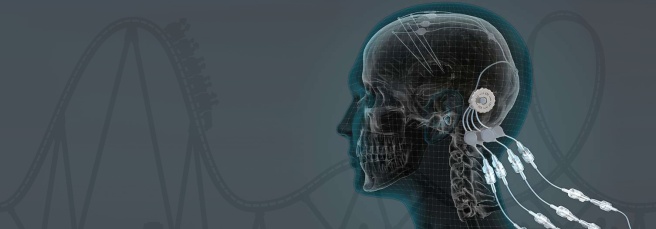



Hi Simon,
I’m having trouble understanding the possible implications of the Miro1 defect reported by the Stanford et al. research project (No. 4 in the Top 5 Pieces of Parkinson’s News).
“We measure the Miro1 response to mitochondrial depolarization using biochemical assays in skin fibroblasts from a broad spectrum of PD patients and discover that more than 94% of the patients’ fibroblast cell lines fail to remove Miro1 following depolarization.”
If the defect is present in the cells of a skin fibroblast, doesn’t that indicate that the cause of the defect is in the DNA?
This seems like a huge discovery, but I’m probably just mis-understanding something basic!
Cheers,
Jeff
LikeLike
Hi Jeffreyn, give me a day or so and I will have a post about it on the website explaining the study. If independently replicated, it is a rather remarkable discovery.
Simon
LikeLike
I was very surprised that you had nothing to say about the phase 2 data on Nilotinib that was presented by Georgetown as a latebreaker at the MDS Conference in Nice, France last month. Are you just thoroughly unimpressed with the data??
LikeLike
Hi Thomas,
Given that the Georgetown trial is still going (the open label 12 extension) & the other Nilotinib trial is ongoing, it is best not to discuss the results that were presented at the MDS meeting here. Whether they were positive or negative could affect ongoing resarchwork. It is a tricky situation to manage disclosures like that. Hope you understand.
Kind regards, Simon
LikeLike